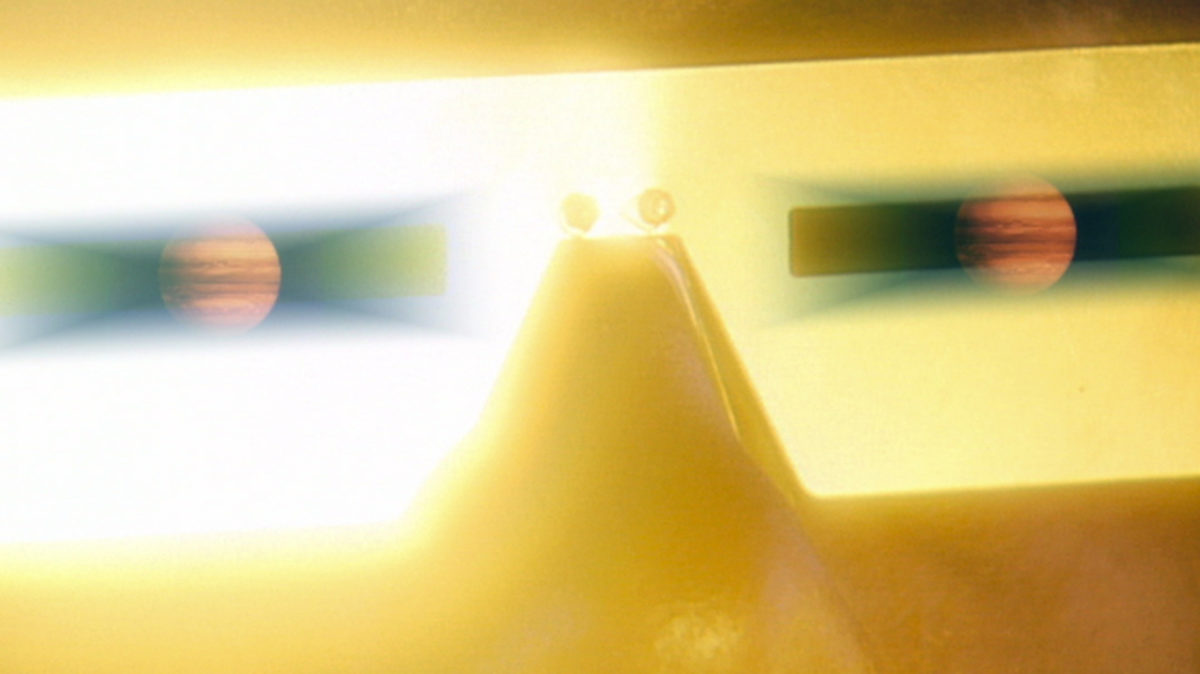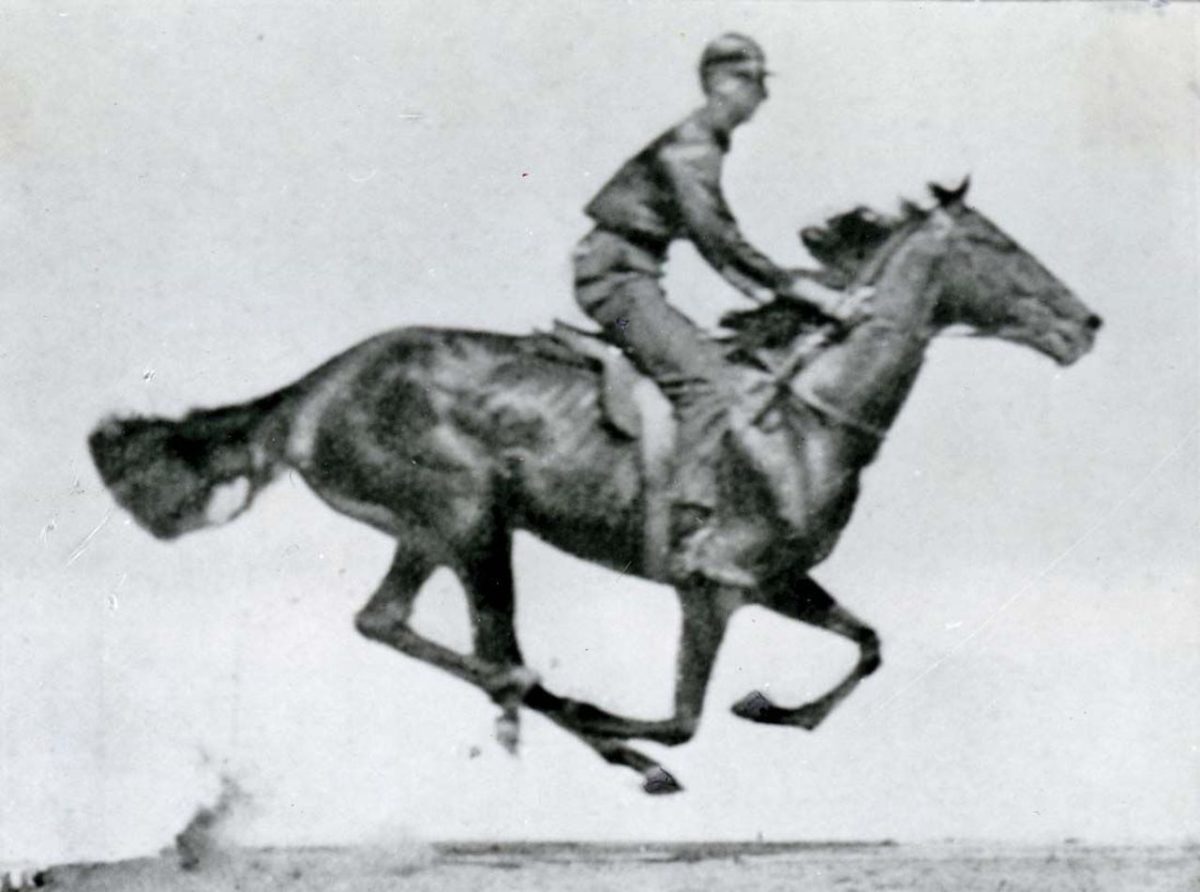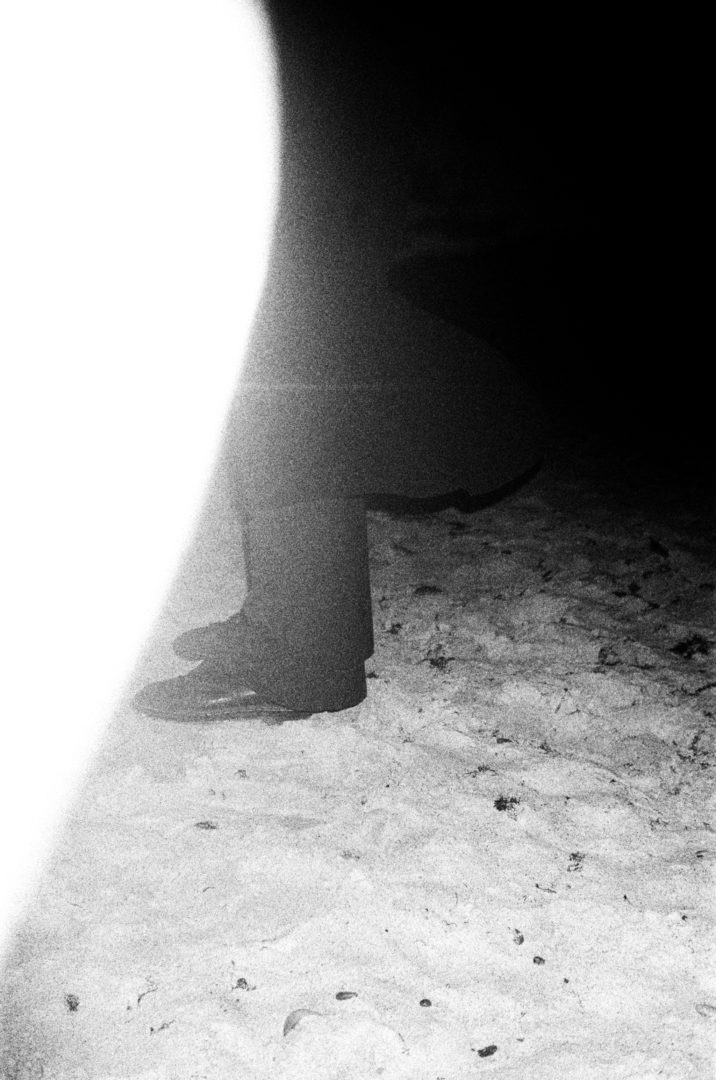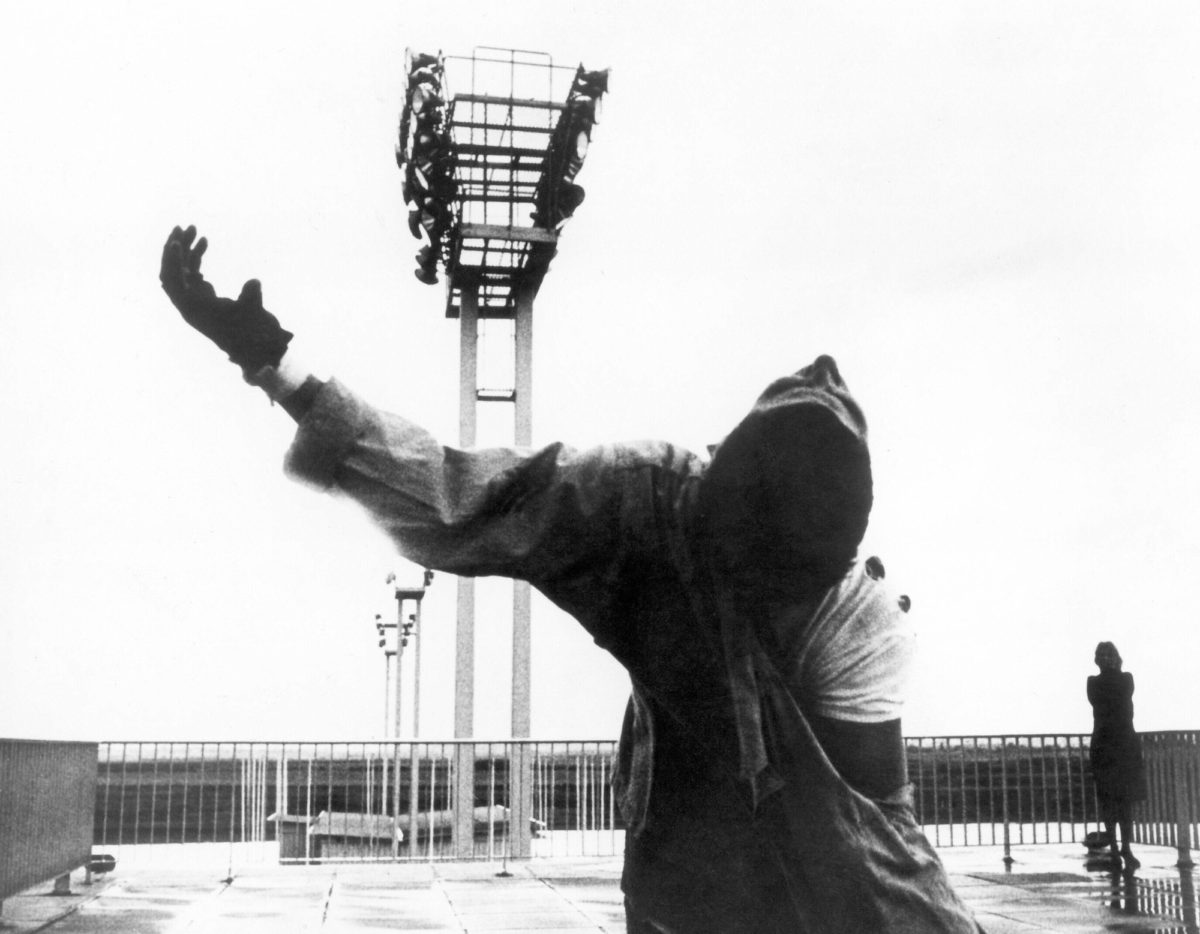We do not move in one direction, rather do we wander back and forth, turning now this way and now that. We go back on our own tracks . . .’ That thought of Montaigne’s reminds me about something I thought of in connection with flying saucers, humanoids, and the remains of unbelievably advanced technology found in some ancient ruins. They write about aliens, but I think that in these phenomena we are in fact confronting ourselves; that is our future, our descendants who are actually traveling in time.
Like the glacier, it slides downwards and leaves traces in the landscape around it
Time, space, memory and our attempts to move freely across these phenomena are the main quests/questions in major works in philosophy and science fiction. How we try to come to terms with our human history, how we can revisit the past and how painstakingly memory rises to the surface to meet us again. These themes are constant negotiations between the conscious individual and the collective unconscious. What can we do while we are conscious? Many great artists are concerned with memory: of their own, their nation or the imagined memory of something that cannot be retrieved—something or someone that has irreversibly disappeared. What can we pull out of this unconscious archive and make audio-visual?
The very idea of time passing at all is able to throw one into a thought loop that results in a detachment from all things present. Staring at the ceiling or a film poster on the wall, doing late night thinking. All time thinking is liminal thinking—perhaps this is why some of the major film essayists think time freezes their images. It’s endlessly cold in space.
Consider a pair of eccentric stellar twins, an astrological phenomenon in which pairs of nearly identical stars orbit each other, separated by vast distances. “Twin binaries are expected to form from a single disk of gas and dust”, so we can suggest that maybe in spite of their distance, their shared memory, the genesis of their make-up, inextricably connects them.
In his 2014 short story Till the End of Time, Chris Marker lays out a scene that includes three characters: Pat Cormon, a shop owner with some establishmentarian remarks up his sleeve, his delirious old acquaintance Jerry and a mysterious woman with a dark hood. With gushing rain as a backdrop, Jerry prophesizes with grotesque gestures about the end of time (“Nothing holds still any more, just as if this dump we’re in were all of a sudden to get on the road—yes!—and go for a wander across the whole town”), before heading off to a place more lively, despite Pat’s groaning. “And that feeling of uneasiness that followed Jerry’s visits, as if somewhere in his ravings he had touched on some old wound of Pat’s, something hidden, shameful, a dormant pain, the source of which had been lost, yet it endured, kept enduring like remorse. Then merely through being thought of, the pain would waken again… as if the world had suddenly lost all meaning, as if without warning a woman at your side were to dissolve right away”, writes Marker, as a stranger enters the shop.
More hesitatingly, Pat enters conversation with the mysterious female figure, who does not speak any more clearly than Jerry, however seems to be able to read his mind. As she speaks to him calmly, the world outside starts to flow. “He dared to look outside. The two sides of the road were slowly sliding out, like ships passing sidelong to each other. Pat was choking with fear. He vaguely heard the woman pronounce a name, the name of a cinema, a cinema that was a little further along her face. The flesh around her eyes was slightly paler. When she lowered her eyelids, it was like two tombs freshly buried. ‘I had a friend who arranged to meet me at the end of the world. I’ve been waiting ever since’.” Yet before the flood gets to him, Pat orders the woman to leave and she does, becoming a passer-by among many others on the city streets. His vision returns to normal.
Similarly to his filmic essay La Jetée (1962), Chris Marker equates the end of Pat Cormon (the woman he met dubbed the Angel of Death) with the end of time as with the end of stillness, as the town slides slowly out of Pat’s point of view. Marker’s ultimate expression of stillness is La Jetée, in which a man descends in still imagery first into the catacombs of Paris after nuclear war, then into his dream world, where his imagined and actual memory interlace, and finally into memory itself, as he meets himself frozen in time forever.
In The re-Jetée, a reimagining by Benedict Seymour, there is a similar movement as his protagonist “begins to slide across time and space, swerving like a stylus knocked out of the groove of an old record (or a new, 180-gram one)”. Here are characters who, like a glacier, slide downward through time and leave traces in the landscape around them.
Seymour’s discourse is more interesting than his subsequent film, Dead the Ends, which, in his words,“takes a film about memory (La Jetée), whose latent meaning as a sabotage of Fordist montage and classical Hollywood continuity has been all but erased through acts of homage, and opportunistically raids and ransacks them for new possibilities. It “non-reproduces” these non-reproductions in search of an alternative cultural economy of mourning and memory. A different kind of time travel, and a different order of “(un)happy ending” can be constructed, but it will be a collective project by definition—way in excess of any of our (current) representations.” While the actual film is much less adventurous than he makes it sound in his writing, he touches on a critical note.
In La Jetée, a mysterious woman moves from sleep to waking. “One day she seems frightened. One day she leans toward him. As for him, he never knows whether he moves toward her, whether he is driven, whether he has made it up, or whether he is only dreaming.” This is the moment of movement. “Around the fiftieth day, they meet in a museum filled with timeless animals. Now the aim is perfectly adjusted. Thrown at the right moment, he may stay there and move without effort.”
In The Last Angel of History, John Akomfrah’s 1996 piece, “Our thief from the future gives up the right to belong in his time, in order to come to our time, to find the mothership connection. The thief becomes an angel. An angel of history.”
These characters as time travellers are unsatisfied with their temporal realities and are willing to give up their freedom to roam for remaining in another time. What more do they have in common? The usual suspects: woman, vinyl, nuclear war, the bright sunlight on a beautiful morning. Each of these protagonists has something altogether untimely about them, though their unwillingness to stay in time leads to their respective demises.

To freeze life’s frames
In ancient times, time was seen as in a state of flux. Heraclitus described time as a flowing river in which nothing could stay fixed. Continuity is a central concept in film history and continuity editing was one of the first techniques to be systematically explored. But more recent theories suggest that time does not flow at all. Nick Young writes in his article for Psyche: “To see an illusion is to see a way the world could be, but isn’t.” Cinema can serve as an example to break the illusion: any second can be broken up into 24 equal parts, or frames. Were we to see these separately or for a prolonged time, there would no longer be movement in each frame. The frantic swapping out of one frame for another evokes seamless dynamism. In this way we notice the energy in our surroundings, as objects are affected by the physiological forces that surround them, they swap out one frame for another, enacting movement through change.
In The Last Angel of History, Edward George shares his thoughts as he finds himself in the heat of the moment, “The data thief wanders through the ruins, the detritus, the wasteland of our late twentieth century, and he comes across a little piece of stone, a fragment. Written on it is a strange phrase: ‘The line between social reality and science fiction is an optical illusion.’” Samuel R. Delany once said in a debate: “We rush in blindly where the angels are afraid to go. So often when there are social questions, you’ll find them first reflected and talked about in science fiction.”
All cinema is made of static matter. Humans, on the other hand, are most often unable to freeze life’s frames. As film essays, La Jetée and The Last Angel of History are attempts at capturing an extra-human time. Henri Bergson has defined time extra-psychologically. The past is not a deep dwelling inside the human brain, but being preserved in itself. It endures without our help. “It has ceased to act, but it has not ceased to be.” We find ourselves in the present , because it is the space in which we act. This means to visit the past, to leap into it. To ‘recollect’ is misleading, since it implies a human authority to conjure up an order of time. Bergson suggests instead the past is an entity, coexistent with the present. To recollect could then mean to travel back and forth to this other, existing layer, to the place that is in the past, but I needed in the present, because it has relevance to it. You absolutely reap what you sow.
There is a distinction between conjuring up an image of the past—a work of adjustment, something like the focusing of a camera—and a genuine leap into the past, in which the moment becomes actualized again. Visually, the entire past can be imagined as an endlessly layered web that, should our request be powerful enough, acts as to an entry way into the present, at which point we can not only step into, but live within it. For our protagonists, a one-way ticket. “Technology has broken time down”, says Goldie, “because we are the future.” He gives an example: if we show off our modern-day recording devices to tribal peoples, this is a contact point between past and present, or present and future. But really, our life is full of these moments. “We are always looking for the future. It is right under our own nose”, Goldie concludes. John Akomfrah uses science fiction, time travel and alien life to describe the real experience of the Black diaspora, but the contact points with La Jetée are evident.

It carries its own accumulation
Technology and audio-visual devices are the perfect tools for the untimely human. They allow critical thinkers in history to capture life in an image. The archive of cinema becomes our real-life memory bank, which we are able to leap into. Each frame leads an immortal existence. With images, filmmakers are able to repurpose data, in the hopes to not only evoke movement, but to create change.
“Perhaps, we are already living, then, in a version of Marker’s future, mourning a continuity to which we no longer have the access code… One might still almost imagine that, for all its destructive capacities, technology could build a bridge into the future; hence La Jetée’s opening sequence: a line of passenger planes queued against the observation deck at Orly, the revving of jet engines yielding to Trevor Duncan’s operatic score… Now, I look back with if not nostalgia then a certain . . . longing, for the simplicity, the clean lines, of that apocalypse.” David Ulin evoking Pat Cormon.
Our current landscape is rampant with war. Perhaps the catacombs will be opened again soon. The time present and ahead surely seem bleak. Any mental imagery can be deceiving, some adjusting of the lens is in order. What our liminal longing can teach us is that we incessantly are in search for meaning, whether in patterns, symbols or images. It circles back to our willingness, if not insistence to put things in order. In Tarkovsky’s The Mirror (1975), he uses his father’s words. Familial circularity, nod to the past, and to be over and done with all that came before:
And suddenly all changed, like in a trance,
Even trivial things, so often used and tried,
When standing ‘tween us, guarding us,
Was water, solid, stratified.
It carried us I don’t know where.
Retreating before us, like some mirage,
Were cities, miraculously fair.
Under our feet the mint grass spread,
The birds were following our tread,
The fishes came to a river bend,
And to our eyes the sky was open.
Perhaps when the world starts moving before us, we ought to give in, cease to be cemented in our time and let time carry us into lucid skies. Redefine my time; what I mean to say is, adjust my lens, come into perfect clarity and then freeze frame this moment forever.

